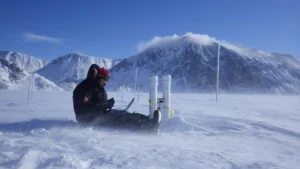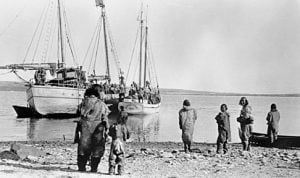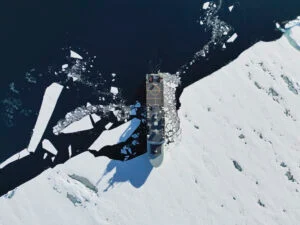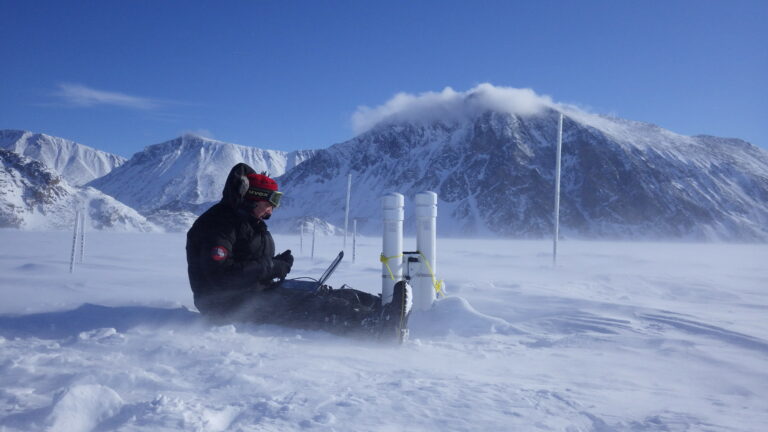
Science & Tech
20 Canadian innovations you should know about
Celebrating Canadian Innovation Week 2023 by spotlighting the people and organizations designing a better future
- 3327 words
- 14 minutes
History
The Canadian Museum of History’s newest exhibit, Unexpected! Surprising Treasures From Library and Archives Canada, opens Dec. 9

In 1825, Ludwig van Beethoven gave a manuscript of an original piece of music to a visiting fan, Canadian music teacher Théodore-Frédéric Molt. That document containing a brief piece entitled “Frue dich des Lebens” (or “Rejoice in Life”), along with a rendition of the haunting music, is just one of the treasures from the Library and Archives (LAC) collection on display now at the Canadian Museum of History’s latest exhibit, Unexpected! Surprising Treasures From Library and Archives Canada.
The exhibit features 36 fascinating finds from deep within the national archives’ labyrinth of dust-free cabinets and temperature-controlled rooms, including declassified photos and correspondence from a 1960s UFO investigation in Falcon Lake, Man., a giant 19th-century painting depicting the teachings of the secretive Free Masons, a map of buried treasure on Oak Island, N.S., and more. Unexpected! is organized into three categories – wonders, secrets and mysteries – and is on until Nov. 26, 2023.
Take a peek at some of the exhibit’s most intriguing artifacts.

This strange print just might be the most mysterious map in the world. The map, based on the work of Flemish cartographer Abraham Ortelius, allows historians to date the print to the late 1500s. The Latin mottos on the jester’s cap and collar refer to fools and foolishness, suggesting that the print’s purpose was probably satirical. Even with these clues, however, no one has yet identified the printmaker nor whom they intended to mock.

This large and unusual painting, called a tracing board, was used by a masonic lodge in rural Upper Canada in the 1800s to instruct new initiates in the lessons and secrets of the society. It is a figurative representation of King Solomon’s Temple, filled with objects and images that symbolize various aspects of masonic teachings. Produced around 1818, it is one of the oldest artifacts of its kind in Canada. In addition to their secret rituals, masonic lodges provided social connection and material support to men and their families in new settler communities. (Credit: Masonic Tracing Board Belonging to Rideau Lodge no. 25, Burritts Rapids, Upper Canada (Ontario).


When prospector Stefan Michalak reported an unidentified flying object (UFO) landing near Falcon Lake, Manitoba, in 1967, the police, the military and the National Research Council all investigated. Authorities took UFO reports seriously during the Cold War, but not because they believed in flying saucers and extraterrestrials. Instead, they worried that “mysterious” flying objects might be sensitive military equipment or even Soviet secret weapons.

Ludwig van Beethoven composed this brief fugue entitled Freu dich des Lebens (“Rejoice in Life”) for a visiting fan, Canadian music teacher Théodore-Frédéric Molt, as a souvenir of their meeting.

Ijiraq, an Inuit woman and mapmaker, drew this map of the Aivilik region of present-day Nunavut for British explorer William Edward Parry, who published the maps in England. The map records the Inuktitut place names, which reflect knowledge of the land from time immemorial. Parry and other colonizers gave their own names to many of these places, but Inuit communities are now restoring their original names. A set of three historical maps by Ijiraq and her fellow mapmaker, Illilliuq, feature in the exhibition, alongside a new map from the Inuit Heritage Trust that shows the extent and persistence of Indigenous place names.
Are you passionate about Canadian geography?
You can support Canadian Geographic in 3 ways:

Science & Tech
Celebrating Canadian Innovation Week 2023 by spotlighting the people and organizations designing a better future

Travel
Immerse yourself in Viking archaeology and Basque whaling history while taking in Newfoundland’s scenic coastline and incredible geology

Exploration
A century after the start of the thrilling expedition that strengthened claims to Canadian sovereignty in the Arctic, the first Canadian Arctic Expedition remains a largely unknown part of the country’s history

People & Culture
As the climate heats up, so do talks over land ownership in the Arctic. What does Canadian Arctic Sovereignty look like as the ice melts?

Travel
Immerse yourself in Viking archaeology and Basque whaling history while taking in Newfoundland’s scenic coastline and incredible geology

Science & Tech
Celebrating Canadian Innovation Week 2023 by spotlighting the people and organizations designing a better future